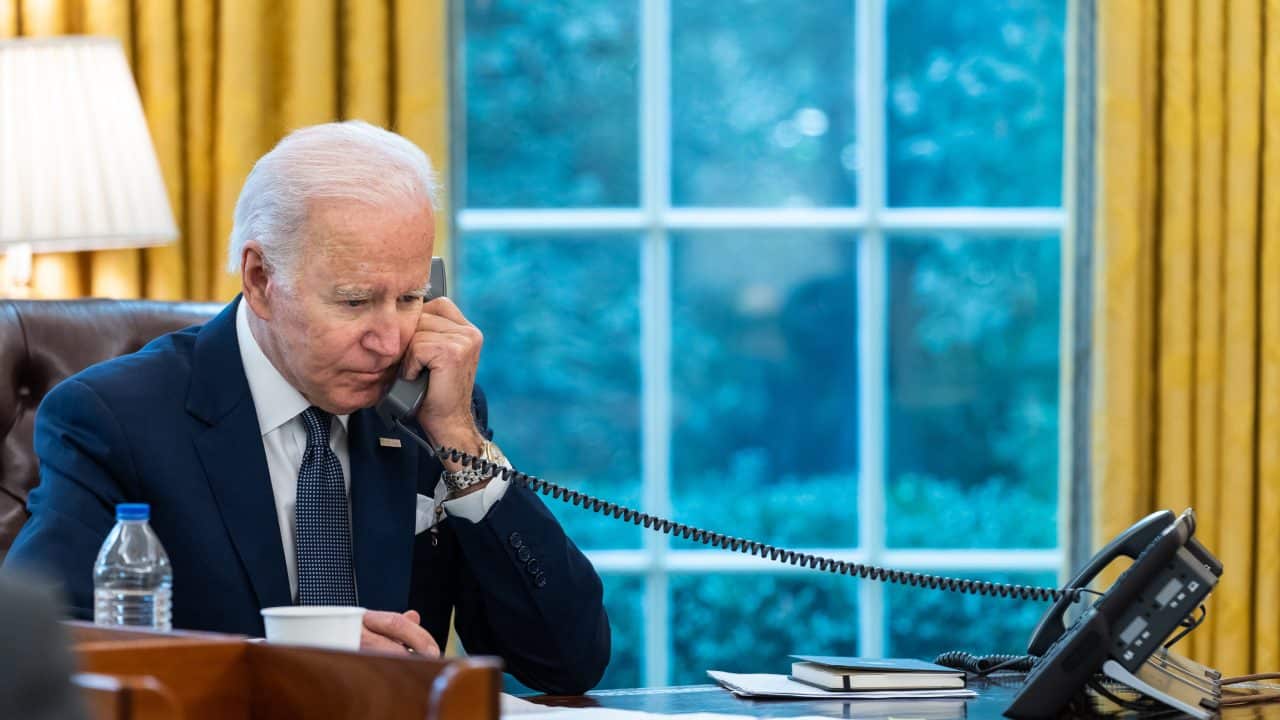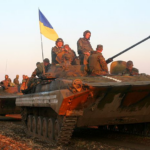The Russo-Ukraine conflict is fast approaching the first anniversary of the invasion with no apparent end in sight. However, there is now an increased possibility of a dramatic escalation that would have global ramifications. Despite earlier assurances not to, President Biden has stated he will send thirty-one M1A1 Abrams tanks to Ukraine to combat the occupying Russian forces. Similarly, there are talks of sending several F-16 fighter aircraft and “longer-range” missile systems to help turn the tide of the conflict in the Ukrainians’ favor. Facially, this does not appear any different than any other weapon systems the U.S. and its NATO allies have already provided Ukraine. But strategically, it is, and there are other domestic and international concerns regarding the extent of U.S. involvement in this conflict.
“Poking the Bear”
Anti-aircraft and anti-missile platforms are considered defensive systems intended to deter or prevent/mitigate aerial attacks and bombardment, especially in civilian areas. However, tanks, fighter jets, and long-range missile platforms are offensive weapons designed to take the fight to the enemy and engage them decisively. One might argue that Javelins, Stingers, MRLS (Multi-Rocket Launch Systems), and 155mm Howitzer artillery pieces are offensive weapons. Still, capability and efficacy differ dramatically between these two sets of military equipment and signals to the Russians that the U.S. and its allies are “all in” on seeing Russia soundly defeated.
First, it confirms Putin’s “fears” about a formal NATO-Ukraine alliance discussed in the article on Prospect Theory, which could very well cause an irrational response, significantly escalating the conflict and expanding the war beyond Ukraine’s borders. It will force Putin to invest more money, military personnel, and equipment to win or at least hold on to current gains. This transition comes when Russia’s military and economy are already significantly strained by the conflict. Therefore, this increased military support Putin could view as a direct action to weaken a rival in a multipolarity international relations arena (U.S., Russia, and China). In lay terms, an overt attempt to change the balance of power and an arguable act of war.
Second, F-16s and long-range missile systems would allow the Ukrainians to strike deep into Russian territory instead of solely defending their homeland. But, again, this level of military support undoubtedly will invoke “fear” in Russia and might provoke a Jus in Bello – justification for war – response or preemptive action by Putin and the Russians. A Ukrainian military strike within Russia’s borders using U.S. warfighting equipment could rapidly devolve into a global conflict. Similarly, these advanced weapons systems will likely require American personnel, military or civilian contractors, to train Ukrainians and provide maintenance support for an indeterminant period. That will increase the likelihood of Russian forces killing an American, which would undoubtedly provoke a U.S. response or escalation depending on the volume of the war drums back home.
“Please, Sir, I Want Some More?”
Next is an unpopular opinion that everyone needs to address and discuss candidly. Why does the U.S. need to send 100 billion dollars worth of aid to Ukraine besides the usual tropes of “protecting democracy” or defending state autonomy? First, the U.S. has no military or defense security cooperation agreements with Ukraine. The international agreements, accords, and treaties between the U.S. and Ukraine primarily consist of economic, trade, and mutual legal assistance – such as a cooperative investigation into an American citizen’s corruption – but not a military alliance or protectorate arrangement.
The closest is a security-related regime, the Organization for Security and Cooperation in Europe (OSCE), that deals with human security issues. These issues include arms control, preventive diplomacy, confidence- and security-building measures, human rights, democratization, election monitoring, and economic and environmental security. Still, it is legally nonbinding and not legitimate grounds for the current level of support the U.S. already provided and is planning.
Additionally, Ukraine is not the pillar of democracy or integrity that many political and media pundits have been pontificating daily since the conflict began. Instead, the country is rife with corruption and teeters on the brink of authoritarianism with its leaders’ cavalier approach to Ukrainians’ freedoms of speech, press, and religion. Therefore, defending Ukraine is not defending democracy, and there is no accountability for where the money and material support truly is going.
Volodymyr Zelenskyy pleading for financial and military aid is not akin to Oliver Twist but closer to Tom Ripley exploiting tragedy for the long con. The U.S. has its own domestic economic and infrastructure woes managed by corrupt bureaucrats; it does not need to fund someone else’s. The U.S. financial and infrastructure aid to Ukraine is another provocation to Russia and has already manifested a transition in the global economy. The U.S. is “poking the Bear” in another medium by propping up Ukraine while smothering Russia.
Causing economic pain in a state invariably causes civil unrest. Additionally, when perpetrated by a rival, it signals an attempt to shift the balance of power, instigate regime change, and is generally responded to accordingly. International sanctions against Russia are hurting it financially and forcing it to pursue more friendly markets that do not support the restrictions, such as China and Iran. However, even U.S. “allies” like Saudi Arabia and India have been conducting business and trade with Russia but using alternative currencies – not the U.S. dollar – to do so. Moreover, global trade and oil markets could transition away from the U.S. dollar due to the crippling sanctions and dubiously effective spending in Ukraine. This shift could result in the opposite of the intended effect and hurt the U.S. and its allies long-term.
Closing the Coffers
In closing, almost everyone sympathizes with the Ukrainian people. No state should have to endure annexation by the military hostilities of another. However, the U.S. should not escalate the Russo-Ukraine conflict more than it already has. The U.S. was able to cause a loss by attrition in the Soviet-Afghan War doing less than it is now, which contributed to the collapse of the Soviet Union. Tanks, fighters, long-range missiles, and a bottomless piggy bank will likely provoke an irrational response from Russia. Similarly, military interventions and regime changes have not worked out well for the U.S. over the last several decades, and this conflict will be no different. There is no reason to let Ukraine become the Serbia or Flanders that sparks a nuclear exchange or crushes Western economies.
[Author’s note: I am neither a “puppet of Putin” nor a Neville Chamberlin. I am merely advocating for a “tactical pause” for decision-makers to examine their actions’ broader and long-term implications. We expect them to approach conflicts such as these from the 10,000-meter view instead of knee-jerk reactions from whoever shouts loudest. We should also ask ourselves who the most vocal proponents of these escalations are and why. I wrote this article because I want us to really consider the potential consequences of becoming more involved in this fight. I also do not want to see more American service members coming home in flag-draped coffins from fighting in a foreign country that does not serve the U.S.’s best interests.]

Ben Varlese is a former U.S. Army Mountain Infantry Platoon Sergeant and served in domestic and overseas roles from 2001-2018, including, from 2003-2005, as a sniper section leader. Besides his military service, Ben worked on the U.S. Ambassador to Iraq’s protective security detail in various roles, and since 2018, he has also provided security consulting services for public and private sectors, including tactical training, physical and information security, executive protection, protective intelligence, risk management, insider threat mitigation, and anti-terrorism. He earned a B.A. and an M.A. in Intelligence Studies from American Military University, a graduate certificate in Cyber Security from Colorado State University, and is currently in his second year of AMU’s Doctorate of Global Security program.
As the Voice of the Veteran Community, The Havok Journal seeks to publish a variety of perspectives on a number of sensitive subjects. Unless specifically noted otherwise, nothing we publish is an official point of view of The Havok Journal or any part of the U.S. government.
Buy Me A Coffee
The Havok Journal seeks to serve as a voice of the Veteran and First Responder communities through a focus on current affairs and articles of interest to the public in general, and the veteran community in particular. We strive to offer timely, current, and informative content, with the occasional piece focused on entertainment. We are continually expanding and striving to improve the readers’ experience.
© 2024 The Havok Journal
The Havok Journal welcomes re-posting of our original content as long as it is done in compliance with our Terms of Use.



